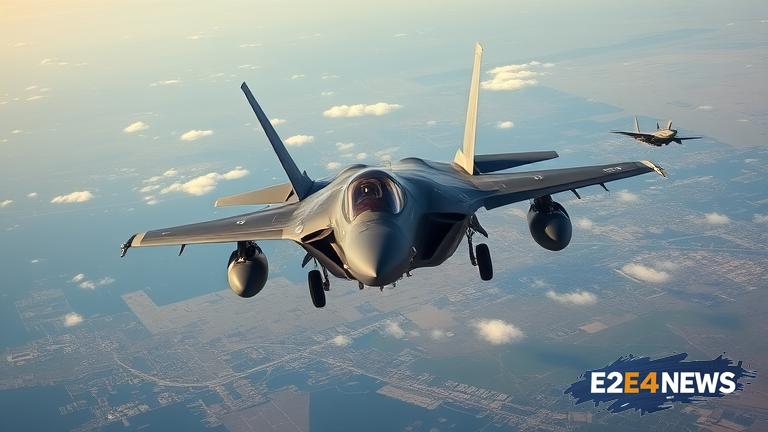The F-35 fighter jet program, one of the most expensive and ambitious military projects in history, is facing a new challenge as the US military considers retiring its surplus aircraft. With a price tag of over $1.7 trillion, the program has been plagued by cost overruns, technical issues, and operational difficulties. The F-35, designed to be a versatile and advanced fighter jet, has struggled to meet its performance expectations, leading to a reevaluation of its role in the US military’s arsenal. The decision to retire spare F-35s is a significant development, as it highlights the program’s ongoing struggles and raises questions about its long-term viability. The US military has been working to address the program’s issues, including software glitches, engine problems, and maintenance challenges. However, despite these efforts, the F-35 continues to face criticism from lawmakers, auditors, and industry experts. The program’s costs have been a major concern, with estimates suggesting that the total cost of the program could exceed $2 trillion. The F-35’s operational challenges have also been a subject of debate, with some critics arguing that the aircraft is not suitable for combat missions. The US military has been exploring alternative options, including the development of new fighter jets and the upgrade of existing aircraft. The retirement of spare F-35s is seen as a step towards reducing the program’s costs and streamlining the US military’s operations. However, the decision is also likely to have significant implications for the defense industry, as it could impact the production and maintenance of the F-35. The program’s future is uncertain, with some lawmakers calling for a reduction in funding or even the cancellation of the program. The F-35’s international partners, including the UK, Canada, and Australia, are also watching the situation closely, as they have invested heavily in the program. The US military’s decision to retire spare F-35s is a complex issue, involving technical, financial, and strategic considerations. The program’s challenges are not unique, as many military projects face similar difficulties. However, the F-35’s high profile and significant costs make it a particularly contentious issue. The debate surrounding the F-35 is likely to continue, with lawmakers, industry experts, and military officials weighing in on the program’s future. The US military’s decision to retire spare F-35s is a significant development, highlighting the program’s ongoing challenges and raising questions about its long-term viability. The program’s future is uncertain, and it remains to be seen how the US military and its international partners will address the F-35’s operational and financial challenges. The F-35’s story is a complex one, involving technical innovation, financial risk, and strategic uncertainty. As the program continues to evolve, it is likely to remain a subject of debate and discussion, with significant implications for the US military, the defense industry, and the global security landscape. The retirement of spare F-35s is a step towards addressing the program’s challenges, but it is only one part of a larger effort to reform the US military’s operations and improve its overall effectiveness. The F-35’s future is uncertain, but one thing is clear: the program will continue to be a major factor in the US military’s plans and operations for years to come. The US military’s decision to retire spare F-35s is a significant development, highlighting the program’s ongoing challenges and raising questions about its long-term viability. The program’s costs, operational difficulties, and technical issues have made it a contentious issue, with lawmakers, industry experts, and military officials debating its future. The F-35’s story is a complex one, involving technical innovation, financial risk, and strategic uncertainty. As the program continues to evolve, it is likely to remain a subject of debate and discussion, with significant implications for the US military, the defense industry, and the global security landscape.





